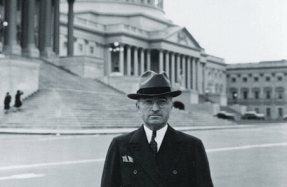THE INDESTRUCTIBLE ACE



LIEUTENANT (J.G.) ALEXANDER VRACIU WAS ONE FRUSTRATED FIGHTER PILOT. ON JUNE 19, 1944—THE BIGGEST DAY OF AIR COMBAT IN THE PACIFIC WAR—HIS GRUMMAN F6F-3 HELLCAT STRUGGLED TO KEEP PACE WITH THE REST OF FIGHTER SQUADRON 16.
The “Fighting Airedales” had scrambled from the aircraft carrier Lexington (CV-16) in response to the second Japanese attack of the morning against Task Force 58, whose 15 carriers outnumbered the nine Japanese flattops.
Vraciu was already a double ace with 12 victories, and he was positioned to increase his score in a sky full of targets. But his Pratt & Whitney engine was stuck in low blower, depriving him of maximum speed and climb. He watched in frustration as his squadron mates pulled away to intercept incoming enemy bombers.
Unable to keep up, Vraciu led Ensign Homer Brockmeyer and another pilot back toward the task force. They established a “shortstop” orbit between the oncoming enemy and the U.S. carriers while other stragglers tagged along.
Vraciu radioed Lexington’s fighter director, requesting a vector in case some “leakers” got through the Hellcat picket line up ahead.
His efforts were rewarded. Lieutenant Joseph Eggert, controlling Task Group 58.3’s fighters, gave Vraciu’s bobtailed formation a westerly heading. Minutes later, peering through his oil-flecked windscreen, Vraciu’s hazel eyes saw “cookies on the plate.” He double-checked his armament switches and gunsight, and dived to the attack.
THE SHOCK OF PEARL HARBOR LEFT LIFELONG SCARS: BENEATH HIS PLEASANT EXTERIOR VRACIU, LIKE MILLIONS OF AMERICANS, NURTURED A FIERCE DESIRE FOR REVENGE.
Alex’s Romanian parents, Alexandru Vraciu (rhymes with “cashew”) and Maria Tincu, emigrated to America with their families in 1906 and 1902, respectively. They met and married in East Chicago, Ind., and started a family with daughter Betty in 1917 and Alexander, born
You’re reading a preview, subscribe to read more.
Start your free 30 days





